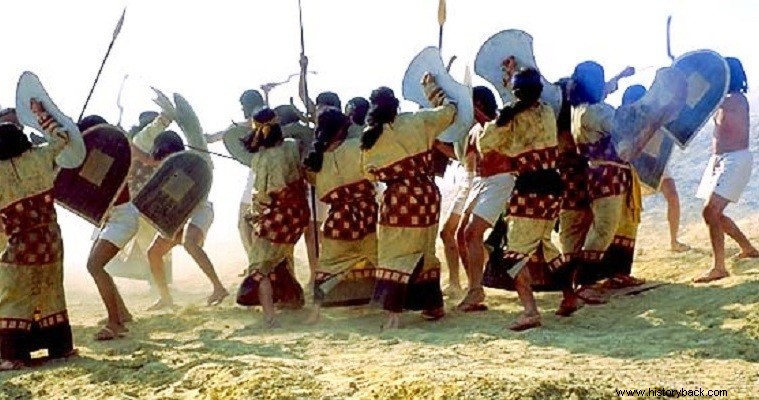
Amos the first Pharaoh of the 18th Dynasty and the brother of Kamos, the last king of the 17th Dynasty, was a special personality of ancient history. He was the Pharaoh who freed the slave in the Syro-Canaanite Hyksos part of Egypt, unified the country and established it as a superpower of the then Mediterranean world.
Amos was born in 1559 BC. assumed the fortunes of Egypt in 1549 BC. after the death of his brother who continued the war against the Hyksos conquerors that their father Pharaoh Tao (or Taa) had started, who was killed fighting them. The Hyksos had conquered Lower (northern) Egypt and displaced the native kings to Sudan, confining them to Upper (southern) Egypt with Thebes as its capital.
The Hyksos, a mysterious people about whom much has been said, invaded Egypt from present-day Palestine in the late 18th century BC. However, the Egyptian state did not disappear, although it was significantly reduced territorially, losing its most fertile lands in the Nile Delta.
Amos ascended the throne at the age of 10, and until he took over the kingdom himself, Anhotep's mother ruled as regent. The queen continued the war against the Hyksos through her generals by pressing the enemies to their capital Avaris (present-day Tell El Dhaba). The strange thing is that in 1987, thousands of fragments of Minoan frescoes were found in the city, which indicates a Greek presence in the area.
Amos began the campaign to recover Lower Egypt at the age of 25-28, according to the sources. According to some sources he undertook the campaign against what turned out to be the last king of the Hyksos Hamudi, in the 11th year of Hamudi's reign. However, other sources state that Hamudi only reigned for one year in 1541-1540 BC.
Amos moved with his army and gradually conquered areas held by the Hyksos, confining them to their capital which the Egyptians also besieged. According to the few records of the time that have been preserved in papyri, the Egyptians first liberated Heliopolis and then the important fortress of Tiaorou (known as Seli to the ancient Greeks), which controlled the main road connecting Egypt with Canaan, today's Palestine .
This means that Amos isolated the Hyksos in this way, excluding their reinforcement from the Canaanites. According to inscriptions on the tomb of an Egyptian soldier who took part in the campaign, having blockaded the enemies in their capital, Amos attacked Avaris three times. However, he was forced to stop operations for a while to suppress a rebellion that broke out in his state.
But then he returned and a fourth, decisive raid took over the city. Immediately after, he completed his victory by conquering the last stronghold of the Hyksos, Saruchen, near today's Gaza, but he had to besiege it for three whole years. The sources suggest that Amos completed the successful war against the Hyksos in the 18th or 19th year of his reign.
Amos, however, continued the war by invading Canaan and reaching at least as far as today's Ashkelon or even Lebanon, in the north and up to the Euphrates, in the east. His goal, however, was not the conquest of the region but the definitive elimination of the threat of the Hyksos and their Canaanite counterparts.
Amos undertook his last campaign against the Nubians, in the northern Sudan, who were vassals of Egypt and had rebelled. The sources testify to the victory of Amos, establishing an Egyptian-friendly dynasty in the region. However, the warrior Pharaoh could not stand the hardships and died at the age of 35, after a glorious reign of 25 years and 4 months, in 1524 BC.
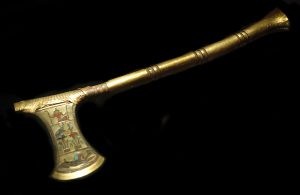
War shield of Amos with inscriptions about his victories in battles.
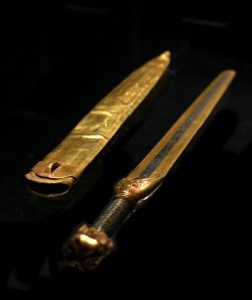
Handbook of Pharaoh Amos.
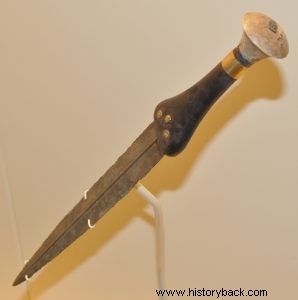
Manual inscribed with the name of Pharaoh Amos.
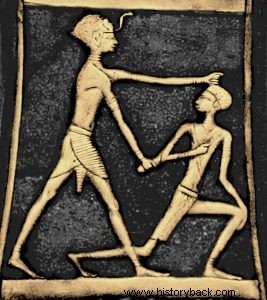
Pharaoh Amos wearing the war helmet with the "sacred cobra", defeats his opponent Hyxos.
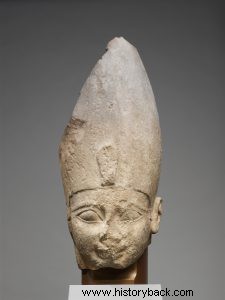
Pharaoh Amos.
